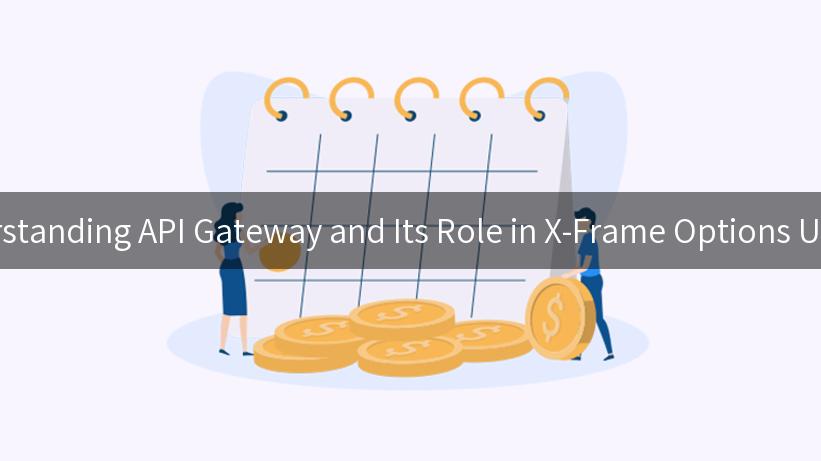
In today’s interconnected world, APIs (Application Programming Interfaces) are the foundation of seamless data exchange between applications. With the rise of cloud services, microservices architecture, and complex web applications, managing and securing APIs has become increasingly critical. API gateways have emerged as a vital component in this ecosystem. This article delves into the intricate world of API Gateways, explores the role they play in the “X-Frame Options” update, and highlights key concepts like APIPark, Azure, OpenAPI, Basic Identity Authentication, and APIKey.
Introduction to API Gateways
API Gateways act as an entry point for client requests, routing them to the appropriate services. They are responsible for request and response transformation, traffic management, authentication, and security. By consolidating these functionalities, API gateways simplify API management and enhance the user experience.
Core Functions of an API Gateway
- Request Routing: Directing incoming API requests to the appropriate backend service.
- Protocol Translation: Converting protocols to facilitate communication between different systems.
- Security: Providing authentication and authorization mechanisms to secure APIs.
- Traffic Management: Managing API traffic to ensure high availability and performance.
- Analytics and Monitoring: Offering insights and real-time monitoring of API usage.
Understanding X-Frame Options
The “X-Frame-Options” HTTP header is a security feature used to protect web applications from clickjacking attacks. This header allows a web server to control whether a browser should be allowed to render a page in a <frame>, <iframe>, <embed>, or <object>.
X-Frame Options Directives
- DENY: Prevents the page from being displayed in a frame, regardless of the site attempting to do so.
- SAMEORIGIN: Allows the page to be displayed in a frame on the same origin as the page itself.
- ALLOW-FROM uri: (Deprecated) Allows the page to be displayed in a frame only on the specified URI.
The Role of API Gateway in X-Frame Options Update
API Gateways play a crucial role in updating and managing security headers like “X-Frame-Options”. They ensure consistent security policies across all API endpoints. With the evolving web standards and the need for enhanced security measures, API gateways provide a centralized point to enforce these policies.
Implementing Security Headers via API Gateways
By utilizing API gateways, developers can dynamically configure security headers, ensuring that they meet the latest security requirements. This configuration is essential for protecting against vulnerabilities and ensuring compliance with industry standards.
# Sample OpenAPI configuration for X-Frame-Options using an API Gateway
openapi: 3.0.0
info:
title: Sample API
description: API to demonstrate X-Frame-Options via API Gateway
version: 1.0.0
paths:
/example:
get:
summary: Example endpoint
responses:
'200':
description: Successful response
headers:
X-Frame-Options:
description: X-Frame-Options header
schema:
type: string
enum: [DENY, SAMEORIGIN]
Utilizing APIPark for API Management
APIPark is a comprehensive API management platform that provides tools for designing, deploying, and monitoring APIs. It integrates seamlessly with API gateways and offers robust features to enhance API lifecycle management.
Key Features of APIPark
- Design: Collaborative tools to create and document APIs using standards like OpenAPI.
- Deploy: Simplified deployment processes to publish APIs quickly.
- Monitor: Real-time analytics to track API usage and performance.
APIPark leverages API gateways for enhanced security and scalability, ensuring that APIs are protected against threats while maintaining optimal performance.
Integrating Azure with API Gateways
Azure offers a suite of cloud services that can be integrated with API gateways to enhance functionality and scalability. Azure API Management is a solution that allows organizations to publish, secure, and analyze APIs across clouds and on-premises environments.
Benefits of Azure API Management
- Scalability: Automatically scales to handle varying loads.
- Security: Provides built-in policies for authentication, including Basic Identity Authentication and APIKey management.
- Analytics: Offers detailed reports on API usage, errors, and performance.
By integrating Azure with API gateways, organizations gain a powerful infrastructure for managing APIs, ensuring they are secure, reliable, and easily accessible.
APIPark is a high-performance AI gateway that allows you to securely access the most comprehensive LLM APIs globally on the APIPark platform, including OpenAI, Anthropic, Mistral, Llama2, Google Gemini, and more.Try APIPark now! 👇👇👇
Basic Identity Authentication and APIKey Management
Authentication is a critical aspect of API security. Two common methods are Basic Identity Authentication and APIKey management, both of which can be implemented via API gateways.
Basic Identity Authentication
Basic Identity Authentication involves sending a username and password with each API request. While simple, it requires secure handling of credentials to prevent unauthorized access.
GET /api/resource HTTP/1.1
Host: example.com
Authorization: Basic QWxhZGRpbjpvcGVuIHNlc2FtZQ==
APIKey Management
APIKeys are unique identifiers used to authenticate API requests. They are often preferred for their simplicity and ease of use. API gateways can manage and validate APIKeys, ensuring that only authorized clients access the APIs.
{
"apiKey": "12345-ABCDE-67890-FGHIJ"
}
Conclusion
API Gateways are a pivotal component in the modern API ecosystem, providing essential services for routing, security, and management. Their role in implementing and updating security measures like “X-Frame Options” is crucial for protecting web applications from emerging threats. By leveraging platforms like APIPark and integrating with cloud services like Azure, organizations can optimize their API management strategies, ensuring robust security and seamless performance.
In a world where APIs drive digital transformation, understanding the intricacies of API gateways and their role in security updates is vital for any organization aiming to maintain a competitive edge. As web standards continue to evolve, staying informed and adaptable is the key to success in the ever-changing landscape of API management.